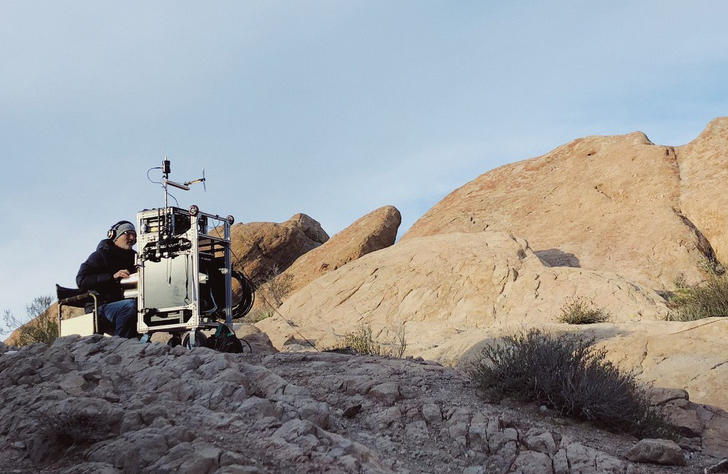Veteran production sound mixer Jeffory Haddad, who’s résumé as a primary mixer or tech includes top TV series that include Grey’s Anatomy, Pretty Little Liars, Mad Men, 24, True Blood, Gossip Girl, The O.C., Glow, American Horror Story, Orange Is the New Black and many others, utilizes a stable of Lectrosonics wireless gear that includes SMV transmitters, UCR411a and SRc receivers, an original Venue modular receiver, and a new DSQD digital receiver, all of which he coordinates with Wireless Designer software.
“Music and studio engineering are my loves, but this was in the late ’90s, when big studios were starting to get less and less work,” he begins. “I realized how intrigued I was by the nature of sound itself, and that it could become a source of creative expression.”
Haddad first encountered Lectrosonics working as a sound utility assistant on the series JAG: Judge Advocate General, which he joined in 2004. “When we started, we didn’t have any [Lectrosonics]. I don’t even think the original Venue was out yet. I remember when [lead mixer Sean Rush] first got a receiver. I think it was the predecessor to the UCR411. It was a big deal, and he continued to buy more Lectrosonics. When I moved up to Pretty Little Liars, we were shooting on a Warner Brothers lot that had a sound department. Everything was Lectro.
“Honestly, the biggest thing I have to deal with, period, is how much of the RF spectrum is now gobbled up by things like 5G service,” he continues. “Here’s where Wireless Designer comes in. I get to a new set or location, the first thing I do is get my antennas in the air and boot it up. It’s been such a time-saver to see all my frequencies on a laptop.”
Given his music background, he says his most important factor in terms of audio quality comes down to dynamic range: “A few things are relevant here. One, the SM-series can take a lot of SPL and still sound natural because the built-in compression is very good. On the other end, the noise floor is so low. This all adds up to a natural sound because we’re not recording cellos here. An actor can go from a whisper to a scream before you can ever reach for your gain control.
“You don’t know it’s going to happen, necessarily, because the actor might have just decided to try it for the next take, and the director might like that take, so Lectro’s performance helps me be ready for that…. You never know. What’s up front before it even gets on to my recorder, let alone to post? My transmitters and my receivers. Lectrosonics performs so well dynamically that whatever else is going on in my day, my wireless is the least of my worries.”




















